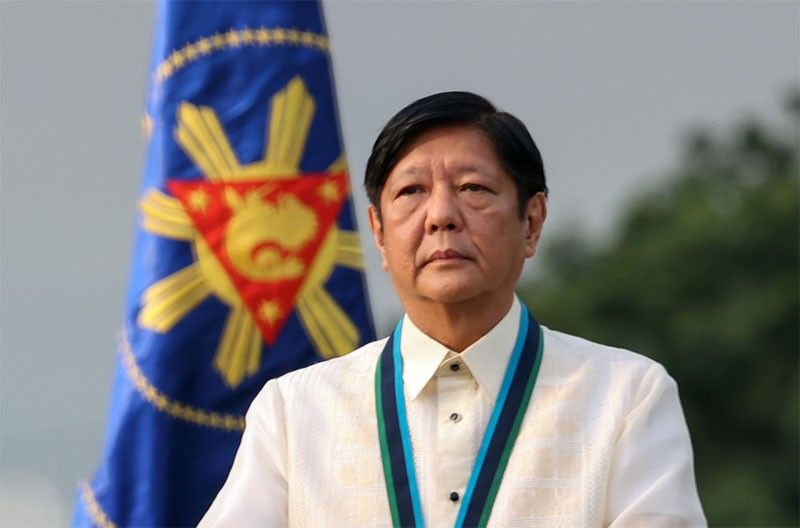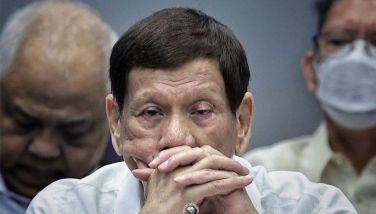Yearender: We’ve done well: Palace touts economic success under Marcos

MANILA, Philippines — The Philippine economy performed well in 2023 despite lingering external challenges, due largely to the administration’s business-friendly measures and continued public spending as well as President Marcos’ active promotion of the country as an attractive investment destination in his foreign trips, according to the government.
This year alone, the President embarked on 12 foreign trips, which the government said generated at least P757.33 billion in foreign investment approvals from January to October, which are expected to create thousands of jobs.
The country is one of the best performing economies among Southeast Asian nations, according to Marcos’ economic managers, posting a gross domestic product growth of 5.9 percent in the third quarter, outpacing its neighbors in Asia such as Vietnam (5.3 percent), Indonesia and China (4.9 percent), Malaysia (3.3 percent) and Singapore (0.7 percent).
“2023? We have done well. Given the circumstances, that’s a very challenging year to say the least. The world market was far more challenging than initially expected, say, at this time last year,” Socioeconomic Planning Secretary Arsenio Balisacan said at a recent Palace briefing when asked about the economy’s status this year.
“We have done well because if you look at the way we have performed in relation to those many other countries, we have remained among the top performers – economic performers in Asia,” he said, noting that this came despite multilateral agencies’ downgraded forecast for practically every country.
The Philippines remained the best performer in Southeast Asia, the chief of the National Economic and Development Authority said, citing a Dec. 13 report of the Manila-based Asian Development Bank.
Balisacan and Finance Secretary Benjamin Diokno expressed optimism on the country’s capability to post a full-year economic growth close to the Development Budget Coordination Committee (DBCC)’s growth assumptions of six to seven percent for 2023 with easing inflation, strong labor market conditions and robust consumer spending, especially during the holiday season.
“I’m still hoping that we get at least the six percent but even if we miss that a bit, again, you know that we should congratulate ourselves. We should be very thankful that we have – did not get as much reduction as many other countries,” Balisacan said.
Diokno had said the economy has to grow by at least 7.2 percent in the fourth quarter to achieve the low end of the DBCC’s growth forecast of six to seven percent this year.
The country’s inflation further eased to 4.1 percent in November, lower than the eight percent posted in the same month last year and the 4.9 percent registered in October this year.
Unemployment in the country fell to 4.2 percent in October this year from the 4.5 percent in the same month last year based on the Philippine Statistics Authority’s latest Labor Force Survey.
National Statistician Dennis Mapa earlier said the number of unemployed Filipinos went down to 2.09 million from 2.24 million in October 2022.
Renewable energy
At a Malacañang briefing in October, Department of Trade and Industry-Board of Investments Undersecretary Ceferino Rodolfo said of the total investments, P427 billion represented foreign projects mostly in the renewable energy sector.
Rodolfo attributed the rise in foreign investment to Marcos’ foreign trips and the lifting of foreign equity restrictions on renewable energy projects last year.
Balisacan said the government has learned “many lessons” this year on how to better manage public programs.
“We had hiccups on the government spending in the first half of the year and that really hit us hard by way of growth and the kind of services that we were able to provide our people,” he said.
“We have learned our lessons. Verily, if we would not want to see that repeated in the coming year, I think that looking at what our many development servers are reporting, they see the Philippines to be a rising star in this part of the world. So, we are optimistic and I think that despite the challenges, we have done well,” Balisacan said.
In a Facebook post on Dec. 7, Marcos said the latest developments show “remarkable progress” in the country.
“This is not just a number, it signifies the lives of millions of our fellow citizens who have found new opportunities. Our dedication to fostering an environment conducive to trade and investment is paying off,” he added.
The ADB’s Asian Development Outlook December 2023 projected the Philippines’ GDP growth and inflation rates at 5.7 and 6.2 percent, respectively, in the fourth quarter.
“Developing Asia’s outlook remains upbeat despite global challenges,” the ADB said in its website.
The multilateral development bank revised its growth forecast for Developing Asia, which includes the Philippines, from 4.7 percent in September to 4.9 percent in December.
Inflation is also expected to decline from 4.4 percent last year to 3.5 percent this year before rising slightly to 3.6 percent in 2024.
“Downside risks are mainly associated with higher-for-longer interest rates in advanced economies, which could trigger financial instability. Possible supply disruptions from El Niño and the Russian invasion of Ukraine could renew energy and food security challenges, and rekindle inflation,” the ADB noted.
Seventy-seven percent or around 65 provinces in the Philippines are likely to experience drought by May next year due to El Niño, weather officials had warned.
Business-friendly
On the sidelines of his attendance at the 50th anniversary of the Association of Southeast Asian Nations (ASEAN)-Japan relations in Tokyo last week, Marcos issued Executive Order 49, creating the Office of the Special Assistant to the President for Investment and Economic Affairs (OSAPIEA).
The OSAPIEA aims to ensure the effective integration, coordination and implementation of the various government investment and economic policies and programs.
The OSAPIEA will be headed by Presidential Adviser on Investment and Economic Affairs Frederick Go, who will have the rank of Cabinet secretary.
Among Go’s tasks are to provide the President “timely, relevant and strategic advice on economic matters and concerns, including among others, inflation, food security and the increasing prices of key commodities.”
In a previous speech, the President said his administration remains steadfast in its commitment to continuously support current and prospective investors as he emphasized that the government has amended existing laws to further open the country’s economy to foreign investments.
Among these initiatives are the Foreign Investments Act, Retail Trade Liberalization Act, Public Service Act and the Renewable Energy Act, which aim to attract more foreign investors in the country’s telecommunications, port operations, transportation and clean energy sectors.
In February, Marcos issued EO 18, directing the establishment of green lanes for strategic investments in all government agencies.
The government has also revised the implementing rules and regulations of the Build-Operate-Transfer law to improve the financial viability of public private partnership or PPP projects.
Marcos had said his administration was making it easier for private investors to engage in infrastructure initiatives.
The President has also issued EO 32, streamlining the permitting process for the construction of telecommunications and internet infrastructure in the country.
Maharlika Fund
In July, Marcos signed the Maharlika Investment Fund Act of 2023, creating the Philippines’ first-ever sovereign wealth fund that will support the administration’s economic goals.
The President last month appointed Rafael Consing Jr. as president and chief executive officer of the Maharlika Investment Corp., which will manage the fund.
Consing previously served as executive director of the Office of the Presidential Adviser for Investment and Economic Affairs under the present administration.
Marcos and his economic managers claimed the Maharlika law would promote fiscal stability through strategic and profitable investments in key sectors.
Amid criticisms, administration officials said the President’s frequent travels abroad have helped the Philippines build up image as an investment hub.
Marcos made state visits to China, Japan and Malaysia in January, February and July, respectively.
Marcos had participated in the World Economic Forum in Davos, Switzerland also in January.
He made an official visit to the US from April 30 to May 4. From the US, Marcos flew to the United Kingdom for the coronation of King Charles, also in May.
The President attended the 42nd ASEAN Summit in Labuan Bajo, Indonesia in May and the 43rd ASEAN Summit in Jakarta in September.
Also in September, Marcos went to Singapore to speak at the 10th Asian Summit. He spent his 66th birthday there and watched the Formula One Singapore Grand Prix 2023 upon the invitation of Prime Minister Lee Hsien Loong.
In October, Marcos participated in the first ASEAN-Gulf Cooperation Council in Riyadh, Saudi Arabia.
He made another visit to the US in November for the Asia-Pacific Economic Cooperation Summit in San Francisco. From there, the President also had working visits to Los Angeles and Honolulu, Hawaii.
Marcos participated in the Commemorative Summit for the 50th year of ASEAN-Japan friendship and cooperation in Tokyo from Dec. 15 to 18.
He cancelled his trip to Dubai from Nov. 30 to Dec. 2 for the 28th Conference of the Parties of the United Nations Framework Convention on Climate Change to focus on the 17 Filipino seafarers held hostage by Yemen’s Iran-backed Houthi militants in the Red Sea.
- Latest
- Trending
































